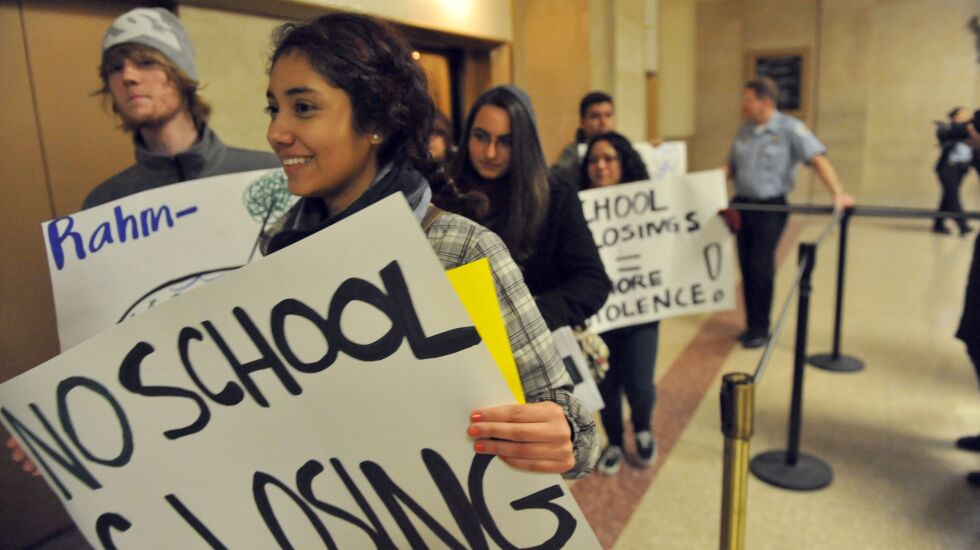
Re-purposing all — or even a portion — of the schools closed by former Mayor Rahm Emanuel is “one of the biggest opportunities yet to be tapped” to revive impoverished South and West Side neighborhoods, a top mayoral aide said Wednesday.
“It’s very frustrating to me because I think — I know — how we could make progress on it,” Planning and Development Commissioner Maurice Cox told the City Council’s Budget Committee during a periodic update on federal stimulus spending.
Cox’s idea is to “activate portions” of shuttered schools “instead of having to marshal all of the resources that it takes to renovate an entire school.”
“Could you [re-purpose] the cafeteria and their commercial kitchen or the gymnasium? Could you isolate those portions of a school site and get entrepreneurs and community organizations to bring those on line, even if … 90% of the school is still mothballed for another day?” the commissioner said.
“I think we should be doing that because it’s a big lift to renovate an entire school. But if we could be a little more flexible with our Building Department — this has to do with fire ratings and isolation — I think we could bring many [or at least] a number of these schools back into service for community purposes. It may only be the gymnasium. It may only be the cafeteria. But imagine what that could do for those particular schools.”
Responding to questions from indicted and soon-to-be retired Ald. Carrie Austin (34th), Cox said he has “committed to a number of people to try and work on a pilot” to test the partial revival model.
He noted a similar test is already underway in Englewood.
“A community organization does have control of the [shuttered] school there and they’re turning it into housing and workforce [development] for returning citizens,” Cox said.
He added: “I look at the portfolio of vacant schools as one of the biggest opportunities yet to be tapped during my time.”
The commissioner’s remarks were music to Austin’s ears.
She got the conversation started, asking Cox, “What’s in your tool box” to revive vacant schools and turn them into sorely-needed housing for veterans or homeless Chicagoans.
She mentioned a former school in West Pullman that is now senior housing, then pointed to another abandoned school in her ward which also could become affordable housing.
“It could be done for families. It could be turned into an SRO [single-room-occupancy building]. There’s just so many things that it could be utilized for as opposed to just being abandoned,” Austin said.
“I agree,” Cox replied. “You took me to the school for veterans in your ward and it was an incredibly impressive outcome and it’s been award-winning. So I would love to identify [more schools], even if it’s only a handful of opportunities where we could do this.”
Emanuel famously closed 50 Chicago Public schools in one fell swoop. Many remain vacant nearly a decade after the largest school consolidation in CPS history. Of those buildings, 14 are still owned by the district.
During his tenure as Detroit’s planning chief, Cox commissioned a study of that city’s 72 shuttered schools, hoping to determine which buildings could be redeveloped, which should be “mothballed for a long time” and which should be demolished.
During a wide-ranging interview with the Sun-Times shortly after his arrival in Chicago, Cox talked about duplicating that model here.
“That’s how you do it. You have to look comprehensively at this amazing resource of iconic neighborhood buildings that will find their re-use,” the commissioner said that day, suggesting senior housing, affordable housing, community and recreational centers.
“I’d like to convince the mayor to allow us to release some of these schools for redevelopment. I want to do that in consultation with the community there because they have very clear ideas about what they need.”
During Wednesday’s testimony, Cox also talked about three more programs bankrolled by stimulus funds aimed at reviving neighborhood commercial corridors: public plazas; finding new uses for vacant storefronts; and uniformed “corridor ambassadors,” drawn from 10 designated community organizations.
“These folks ... are working in tandem with our police department, with Family and Support Services, even with Chicago Public Schools and Safe Passage [workers] so that there is a welcoming, friendly presence on our commercial corridors. It also obviously increases peoples’ sense of safety,” Cox said.
Contributing: Nader Issa







